Surprisingly, I have been more into Square Enix’s RPG titles recently than in years past. Re-releases of cult favorites like SaGa Frontier, oddities such as Voice of Cards, and smaller sequels like NEO: The World Ends With You did much more for me than their latest big-budget releases. I have also come to enjoy producer Tomoya Asano’s recent work, specifically Octopath Traveler. So when I saw that he was leading development on a new title, my interest was immediately piqued. In spite of my anticipation for the release, though, Triangle Strategy still managed to surprise me in ways both good and bad.
Taking place on the fictional continent of Norzelia, Triangle Strategy centers around the conflict between three distinct nations. Each of the three regions – Glenbrook, Aesfrost, and Hyzante – all have specific resources they control. This division of resources previously lead to all three facing off against each other in the conflict known as the Saltiron War. An uneasy truce was eventually forged between the three, but 30 some odd years later, tensions are once again rising. While you do get scenes involving the other nations, the story mainly follows the actions of Serenoa Wolffort of Glenbrook. The young, inexperienced leader is quickly thrown into a conflict that could pave the way to a brand new future for the continent.
If you had the chance to play the demo, you would know that the plotting is incredibly dense at times. The medieval pageantry and big personalities of Norzelia frequently take center stage, which results in some long stretches of inaction. During the early hours of the game, there are periods of 30 to 40 minutes where you are out of battle completely. And as much as I did appreciate the castle intrigue of the story, the title doesn’t exactly get off to a strong start by doing this. Over time, though, I found myself getting more and more invested in the bloody conflict between the three warring regions. That’s both due to the excellent character development done by the team at Artdink, and the weighty Scales of Conviction system.
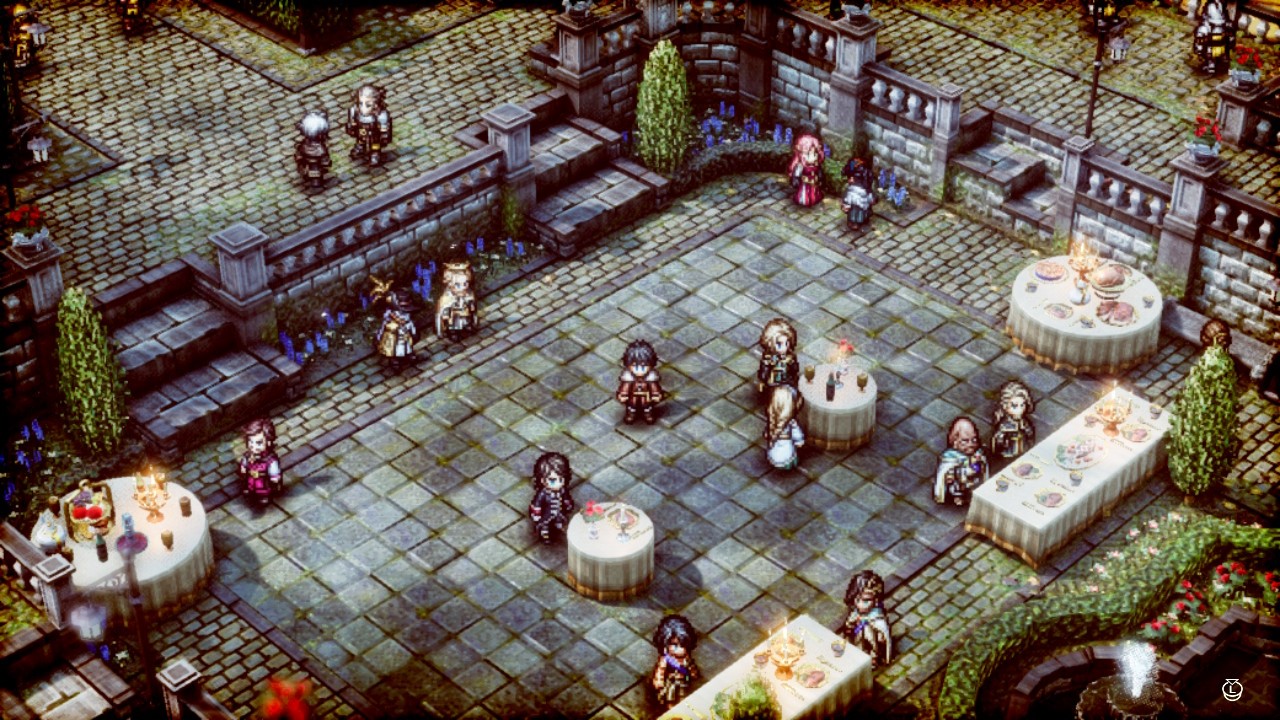
Introduced early on in Triangle Strategy, the Scales of Conviction is a decision-making system utilized by House Wolffort. As king, Serenoa entrusts his most trusted allies with sacred coins. When a big decision is thrust upon the group, each member of this alliance casts a vote on the scales, and whatever choice has the majority is the one that gets made. This decision is binding, so even if you disagree with it, you can’t back out of it. What you can do, however, is sway each individual member’s mind before the vote is cast. In order to change someone’s mind, you’ll either need pertinent information that can be sussed out during moments of exploration, or you can play into the person’s moral code. These moments do an excellent job of further fleshing out the core cast of characters, while still giving you the chance to uniquely shift the story around.
Serenoa’s convictions are also frequently put to the test during the campaign as well. During your various conversations with other characters, you’ll have the option to respond to a statement with typically one of three options. Each of these choices corresponds with three distinct types — Utility, Morality, and Liberty. The catch, though, is that you don’t have a way of knowing which type has been dominating your decisions. By obscuring that information, your decisions are based more on the statements themselves, rather than purposefully pushing yourself towards one type only. Every decision you make goes towards shaping the story in one way or another, so it’s important to weigh each option thoroughly.
Borrowing from the likes of Final Fantasy Tactics and Tactics Ogre, Triangle Strategy is a grid-based, turn-based RPG. The battlefield is broken down into a grid, and each character has a certain number of spaces they can move in a turn. Each character has at least one action they can use per turn as well. This covers actions such as attacks, spells, or item use. Something important to keep track of is that your whole team does not move in succession. Actions are individualized, so there could be stretches where you move one character, then your enemy moves two or three before you get to move another party member. It’s critical that you plot out your actions in advance, as making an ill-advised move can quickly lead you to getting wiped out.
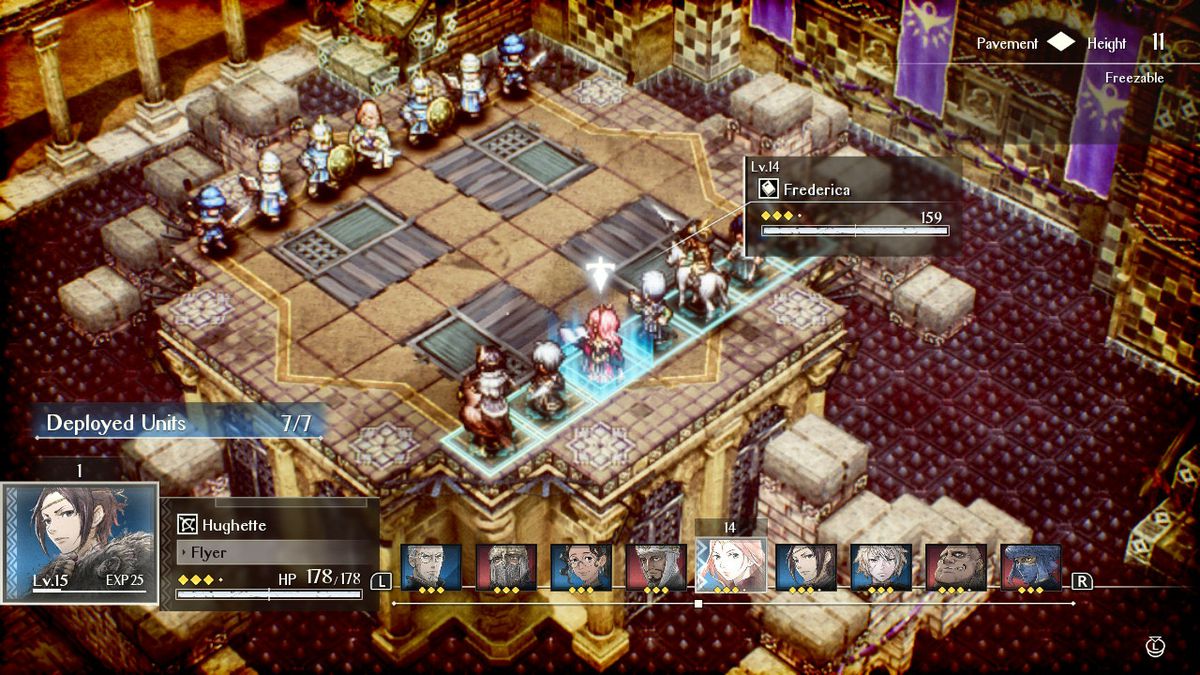
Unlike other efforts in the genre, there is no customizable class system to be found in Triangle Strategy. Every member of your team is committed to the same style of battle they have upon joining up with you. Serenoa is your traditional knight-style combatant, so you can’t modify him to be a mage, for example. What you can do, though, is promote them to a higher title, and improve their weapon ranks. These are done through acquiring specific items, then spending them at your encampment. This serves as your base of operations, and also includes a shopkeeper and an area to play through mock battles for extra XP. With storyline battles as spaced out as they are, it’s important to pop in and farm experience when you can.
With each ally proficient in specific areas, it’s important to choose the right crew to go to battle with. At the outset of each fight, you have the opportunity to select which members of the team will accompany you into that battle. If you’re going into a battle where there is plenty of higher ground to use, it may be wise to take archer Hughette, for example. This will let you take advantage of the higher ground, which is one of the many battlefield boosts you can make use of. And it’s important to find every advantage you can, as the title can be brutally challenging at times. Even on the normal difficulty setting, I found myself struggling with some of the earlier conflicts you are thrust into. However, that just made eventually claiming victory all that much sweeter.
For as challenging as it can be at times, I wouldn’t describe Triangle Strategy as unfriendly. It sands down some of the rougher edges its contemporaries like Fire Emblem are known for. Permadeath is not a factor, and neither is friendly fire when it comes to magic attacks. I’m a huge fan of the fact that any XP and loot gained in battle, win or lose, is kept. Losing one fight in a row numerous times is not ideal, but at least you are getting something out of each crushing defeat. That being said, I still don’t love how much you need to embrace the grind at points. Whether it is due to slamming into one of the story missions repeatedly or playing through a mock battle over and over, it can begin to grate.
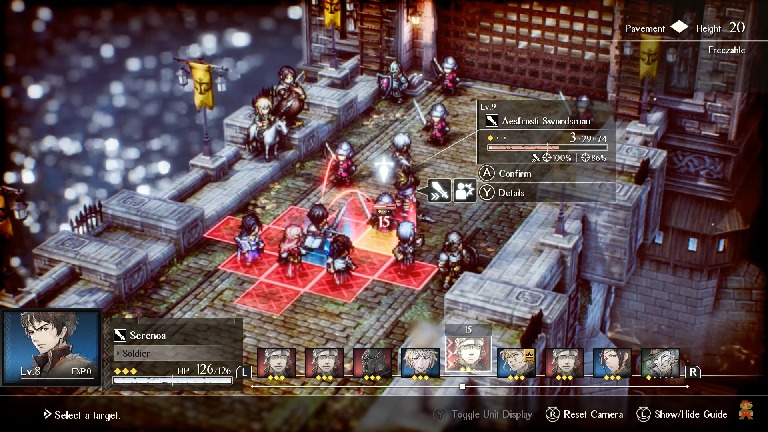
I have seen some pushback to the 2D-HD art style used by Triangle Strategy recently, but I think it looks quite fantastic. Whether playing on a large screen or the Switch’s screen, the visuals are charming and gorgeous. The character models look fantastic, and I love how the environments are designed. Being able to swing the camera around and get a full-fledged look at these locations is a nice touch. As lovely as the visual design is, I’m not as high as the audio work. The soundtrack does a solid job of setting the tone of each scene but didn’t stand out in any real way to me. The voice acting is inconsistent from character to character, however. Most of the main cast isn’t too bad, with Adam Harrington’s Benedict being a standout. But other main stars such as Serenoa and Roland aren’t nearly as strong.
It struggles to get moving, but once Triangle Strategy is up and running, it’s an excellent experience. The dense plotting of the title is consistently captivating, and the element of choice provided is second to none. It truly feels that every choice you make carries the appropriate amount of consequences. And when you do get to step foot onto the battlefield, the gameplay is solidly designed. It’s familiar in design but handled wonderfully by Artdink. The uneven balance between story and play-time might not appeal to everyone, but for those willing to stick through it, you will be immensely rewarded.
This review was based on the Nintendo Switch version of the title. A copy was provided to us by Nintendo.


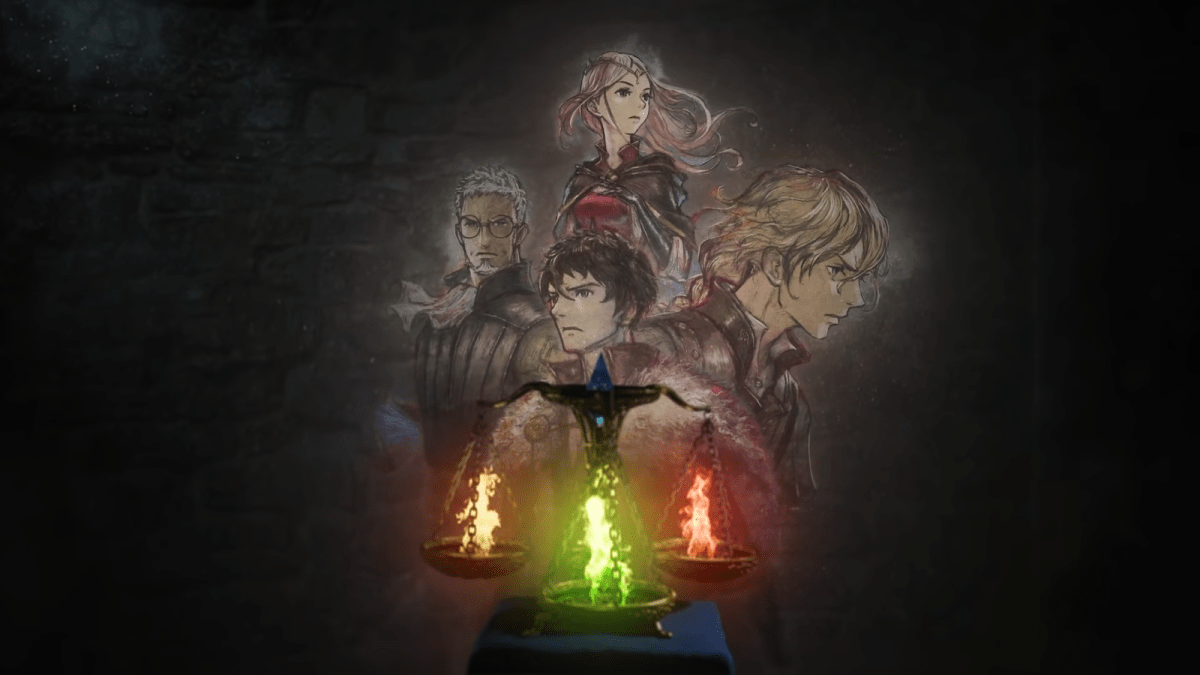
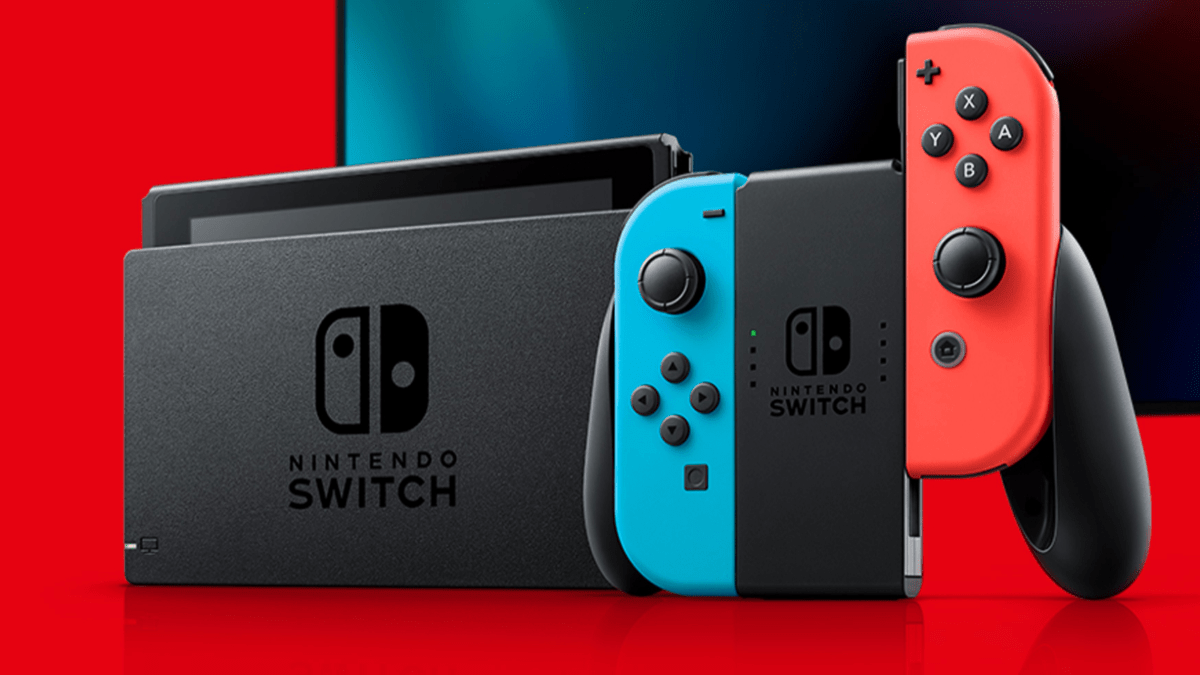
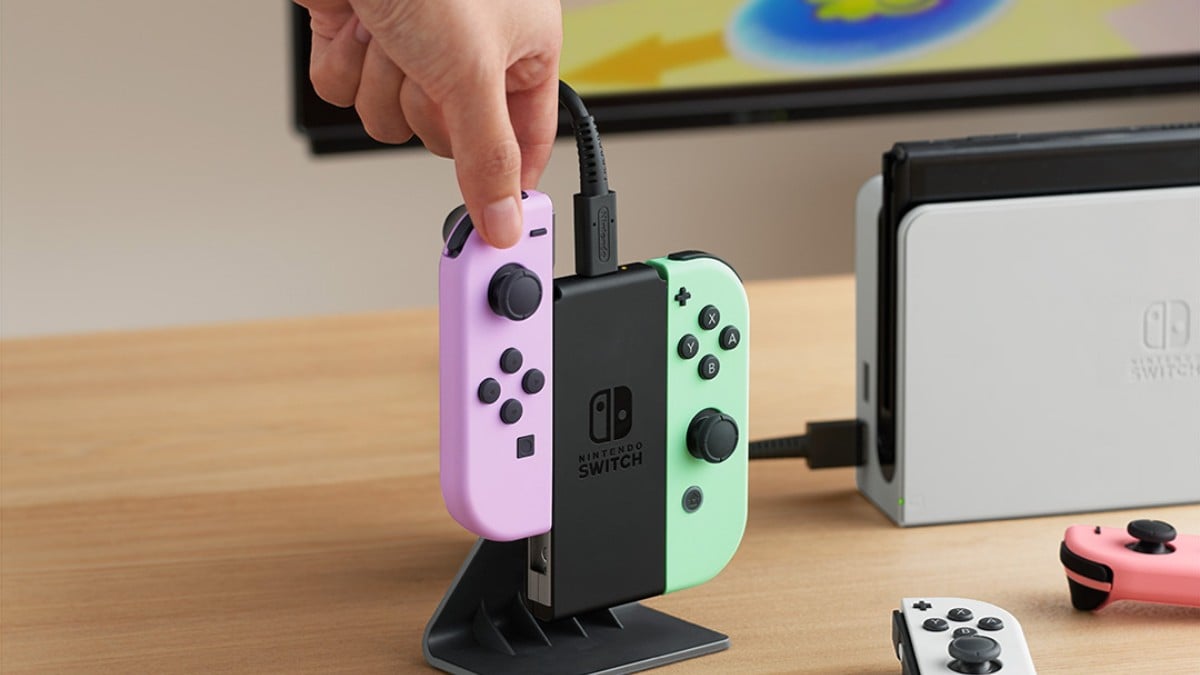



Published: Mar 15, 2022 01:59 pm